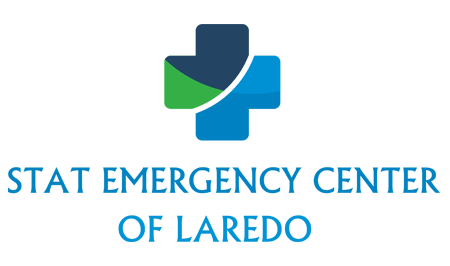
Stat Emergency Center of Laredo accepts all private insurance plans. Some of the major plans that we accept are United Health, Aetna, BlueCross/BlueShield, Humana, Tri-Care, Cigna, and CHIPS.
Other forms of payment accepted are checks, cash and the major credit cards, including MasterCard, Visa and Discover Card.
Upon completion of your visit to our emergency room, your copay will be collected. Additionally, the portion of your emergency room bill that is not paid by your insurance company will be your responsibility.
In-Network vs. Out of Network
Texas guidelines require all insurance carriers to pay in-network benefits for any patient who seeks emergency medical treatment services. A requirement of Texas law is that your insurance carrier pay for emergency care services you utilize and this requirement holds true whether those emergency care center services are in-network or out of network. When determining what an emergency is, the State of Texas encourages the patient to use a prudent layperson standard. Because the Texas State law requires your insurance carrier to reimburse you for emergency room visits, any refusal of payment by your insurance carrier enables you to file a grievance with the Texas Department of Insurance. For more information and more details about the Texas Department of Insurance, please visit http://www.tdi.state.tx.us.
Understanding your Emergency Care Bill
Stat Emergency Center of Laredo realizes that the medical billing process can be challenging and complicated. Our job at Stat Emergency Center of Laredo is to be fair and transparent with our billing systems and processes. Our staff will work with you to ensure you understand our bills as we realize emergency room service bills can be different from other routine medical bills. This can be true of bills that are from both hospitals and physicians. As a licensed freestanding emergency center Stat Emergency Center of Laredo functions just like a hospital-based emergency room. It is important to remember when reviewing your bills that Texas law requires all insurance carriers to pay in-network benefits for emergency medical services. Additionally, these laws go as far as to state that the insurance carrier must reimburse you for your emergency room visit. These payments are required whether your emergency care was provided by an emergency room that is in-network or out of network. All of these requirements are critically important as you review the emergency room treatment bills.
Insurance Benefits for Our Emergency Room
If you are using insurance to pay for your emergency treatment services your insurance company will send you an explanation of benefits (EOB) that details our charges. Please remember that the EOB is not a bill from us. Additional charges may be required for your visit depending on the details of your particular insurance plan. Most insurance carriers consider us as out of network; however, Stat Emergency Center of Laredo will honor all in-network deductibles and benefits. Additionally, our billing experts will contact your insurance carrier to notify them we are planning to honor your in-network benefits. Becoming familiar with your benefits can be easier by studying the EOB statement from your insurance carrier. Additionally, a review of your insurance policy will help you determine any applicable deductibles, co-insurance, or other information that might outline your rights and responsibilities. These reviews will help you make an informed decision for emergency care center services.
Our Billing Policy
Your emergency room co-pay will be collected by our staff during your visit. We will then send a bill to your insurance company for your policy’s emergency room benefits. There will be 2 separate claims mailed out to your insurance carrier: a bill for the emergency facility and a bill for the emergency physician. It should be noted that your insurance carrier will not be charged separately for radiology, pathology, or cardiology over-reads. This practice is consistent with hospital-based ERs. Alternatively, the charges for radiology, pathology and cardiology will be included in the emergency facility bill. Treating emergency medical conditions requires emergency rooms to maintain an extremely high level of preparedness. This level of preparedness is considerably higher than at other, more traditional medical facilities. Emergency room clinics charge a facility fee for each patients’ visit to help offset the recurring costs associated with maintaining this high level of preparedness. This is done to ensure you have access to an environment that provides the best in emergency care. The facility fee is a charge that is calculated on a point system, which is based on procedures performed, patient acuity, potential liability, and the complexity of the physician/patient interaction. If you have questions regarding your emergency room bills, please do not hesitate to contact our billing team. Our Billing Team will work to quickly resolve any issues and we look forward to serving you in any way that we can.
How do deductibles, coinsurance and copays work?
When both you and your health insurance company pay part of your medical insurance. It’s called cost sharing. Deductibles, coinsurance and copays are all examples. Understanding how they work will help you know when and how much you have to pay for care.
Deductible
- A Deductible is the amount you pay for health care services before your health insurance begins to pay.
Let’s say your plan’s deductible is $1,500. That means for most services, you’ll pay 100 percent of your medical and pharmacy bills until the amount you pay reaches $1,500. After that, you share the cost with your plan by paying coinsurance and copays.
Coinsurance
- Coinsurance is your share of the costs of a health care service. It’s usually figured as a percentage of the amount we allow to be charged for services. You start paying coinsurance after you’ve paid your plan’s deductible.
Here’s how it works. Lisa has allergies, so she sees a doctor regularly. She just paid her $1,500 deductible. Now her plan will cover 70 percent of the cost of her allergy shots. Lisa pays the other 30 percent; that’s her coinsurance.
Copay
- A copay is fixed amount you pay for health care service, usually when you receive the service. The amount can vary by the type of service. You may also have a copay when you get a prescription filled.
For example, a doctor’s office visit might have a copay of $30. The copay for an emergency room visit will usually cost more, such as $250. For some services, you may have both a copay and coinsurance.
What does this mean for me?
When choosing a plan, think about how much you use your insurance and how much protection you want against unpredictable expenses. Then look at the plan’s deductible, coinsurance and copays and find what works best for you. Here are a few things to consider.
- Deductible: a plan with a high deductible will have cheaper monthly payments. But you’ll pay a lot upfront when you need care. You can also look for plans that cover some services before you pay your deductible.
- Coinsurance: Typically, the lower plan’s monthly payments, the more you’ll pay incoinsurance.
- Copays: If you visit your doctor or pharmacy often, you might want to choose a plan that has a low copay for office visits and prescriptions.
For additional questions about our payment options, please contact 832-658-2207.

